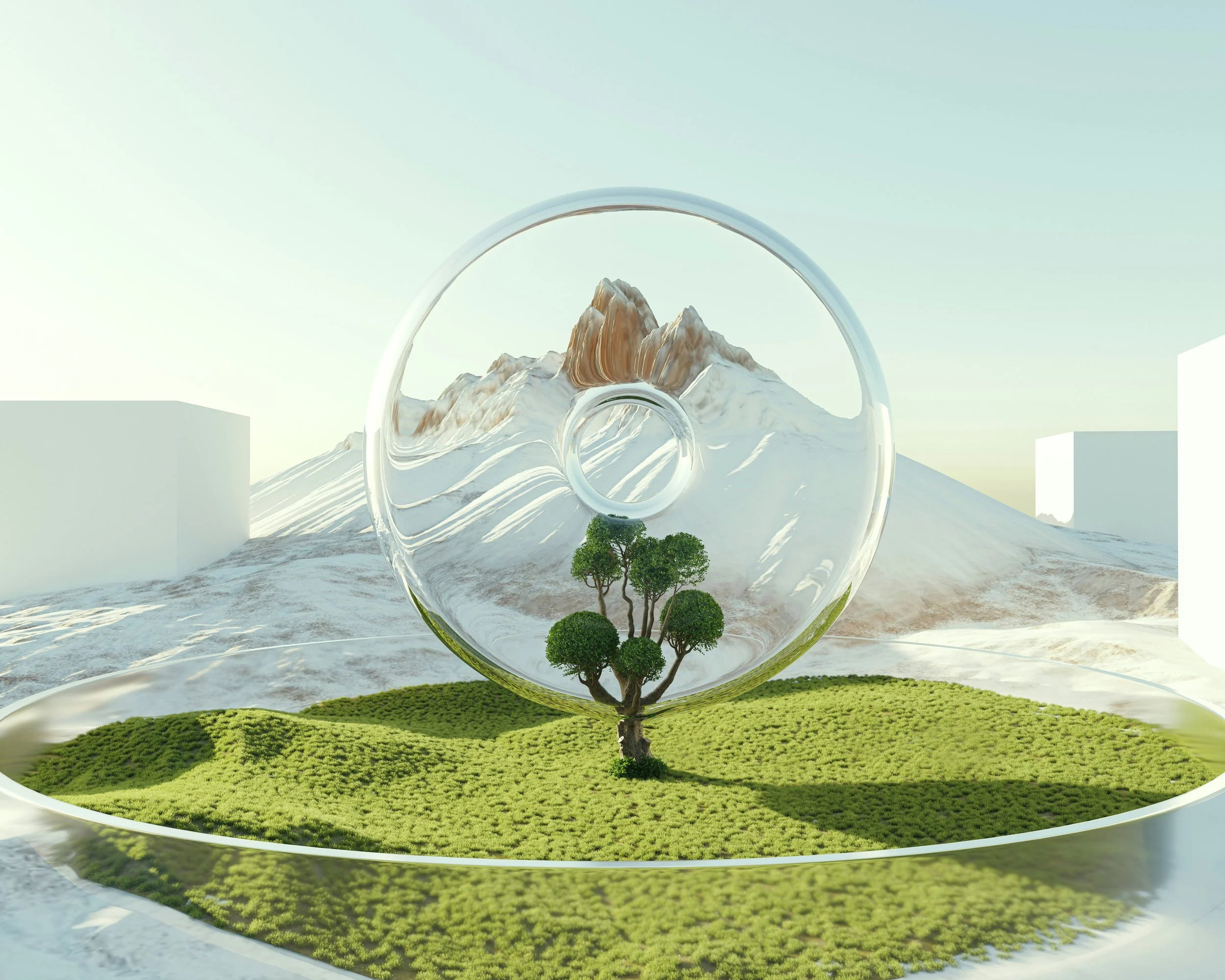What are the six human design environments and how do they affect comfort?
image credit: Shubham Dhage
The six Human Design environments: Caves, Markets, Kitchens, Mountains, Valleys, and Shores describe the kinds of spaces where your body and energy feel most comfortable, supported, and ‘at home’. Each environment type offers a unique blueprint for setting up your surroundings to help you thrive, relax, and access your intuition and creativity. Here’s how each one affects comfort:
Caves
Spaces that feel safe, enclosed, and protective - think cozy nooks, rooms with a solid wall behind you, or areas with only one entrance/exit.
You feel most at ease when you have control over your space and can retreat or recharge without being disturbed.
Comfort comes from feeling secure and shielded from outside distractions.
Markets
Stimulating, dynamic spaces with variety - like a bustling marketplace, a lively co-working space, or a room with lots of textures, colors, or people coming and going.
You thrive on options and sensory input.
Comfort comes from being able to sample, choose, and change your environment as your mood shifts.
Kitchens
Central gathering places for mixing, creating, and collaborating-literal kitchens, creative studios, or anywhere people and ideas ‘cook’ together.
You feel comfortable where you can experiment, blend influences, and be at the heart of activity.
Comfort comes from being able to participate in a lively, collaborative environment.
Mountains
Elevated or open spaces with a view - think attics, high floors, or seats by a window. You don’t need to live on a mountain, but you like perspective and a sense of overview.
You feel most comfortable when you have physical or metaphorical ‘height,’ space to breathe, and can observe your surroundings.
Comfort comes from having a vantage point and openness.
Valleys
Social, collaborative environments where information and people flow - like open offices, coffee shops, or places where you can listen in without being the center of attention.
You’re at ease when you can tune into conversations, share ideas, and feel part of a community.
Comfort comes from being ‘in the know’ and having access to social or informational exchange.
Shores
Transitional or boundary spaces where two elements meet, such as the edge of a park, a window seat, or rooms with contrasting features.
You feel most comfortable at the intersection of different environments, enjoying variety and the sense of possibility.
Comfort comes from being able to move between worlds or perspectives.
How environments affect comfort
When you’re in your ideal Human Design environment, your energy flows more freely, you feel more at ease, and you’re better able to listen to your intuition and authority.
The right environment can make you feel emotionally stable, physically relaxed, and open to new experiences, while the wrong one may leave you feeling drained, restless, or out of sorts.
Experimenting with different aspects of your environment - like orientation in a room, lighting, or the presence of people - can help you discover what truly supports your comfort and well-being.
When you’re in your ideal Human Design environment, your energy flows more freely, you feel more at ease, and you’re better able to listen to your intuition and authority.
The right environment can make you feel emotionally stable, physically relaxed, and open to new experiences, while the wrong one may leave you feeling drained, restless, or out of sorts.
Experimenting with different aspects of your environment like orientation in a room, lighting, or the presence of people can help you discover what truly supports your comfort and well-being.
Knowing your Human Design environment empowers you to intentionally create or seek out spaces that make you feel safe, inspired, and comfortable in your own skin.
Sources
Amy Doyle’s blog explains there are six environments in Human Design: Caves, Markets, Kitchens (hardscapes), and Mountains, Valleys, Shores (landscapes), and discusses how each supports comfort and well-being.
Vaness Henry’s site lists the six environments : Cave, Market, Kitchen, Mountain, Valley, Shore and describes how your body resonates best in one of them for optimal comfort and clarity.
Pure Generators’ blog also outlines the six environments and emphasizes how being in your correct environment helps you thrive and reduces resistance.
Human Design Blueprint and Kirsten Morrison’s blog both provide descriptions and examples of each of the six environments, helping readers understand how to identify and use their ideal environment for greater ease and productivity.
Calculate your chart
Vaness Henry provides a detailed overview and calculator for the six Human Design environments: Caves, Markets, Kitchens, Mountains, Valleys, and Shores, explaining their significance and how to find yours.
Human Design Blueprint explains each environment and its role in comfort and well-being, describing how Markets, Kitchens, Caves, Valleys, Mountains, and Shores affect individuals.
Jovian Archive and myBodyGraph are official Human Design resources that explain the system and provide chart calculators, which include environment variables.
Created for the conscious, curious, creative, neurodivergent woman© StarCozi, 2025.
All rights reserved. Content is shareable.
All images from Unsplash, Inc.
StarCozi owner has Unsplash subscription and provides image/photo credit within each post.


